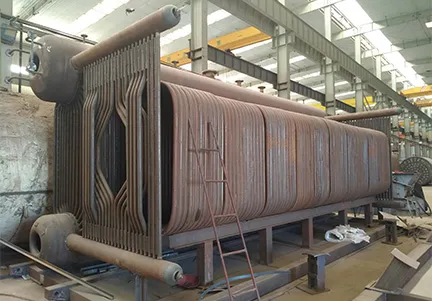Best Air Preheater | Efficient Heat Exchange Solutions
The Importance of Best Air Preheaters in Industrial Applications
In the ever-evolving landscape of industrial operations, efficiency and sustainability are paramount. Among the various components that contribute to energy efficiency in heat transfer systems, air preheaters play a crucial role. These devices are designed to capture waste heat from flue gases and transfer it to the incoming air, ultimately enhancing the overall thermal efficiency of industrial processes. In this context, identifying the best air preheaters tailored to specific industrial needs becomes essential.
Air preheaters can be categorized primarily into two types regenerative and recuperative. Regenerative air preheaters utilize a heat exchange medium to absorb heat from hot gases before transferring it to the incoming air. This design is effective in minimizing heat loss and improving efficiency in applications such as power plants, cement production, and various manufacturing processes.
On the other hand, recuperative air preheaters directly transfer heat from the exhaust gases to the processed air. This method is well-suited for operations with lower temperature differentials. The choice between regenerative and recuperative systems largely depends on the specific operational requirements and temperature ranges involved in the industrial process.
One of the key advantages of using high-quality air preheaters is their capacity to significantly reduce fuel consumption. By preheating the incoming air, these devices lower the energy required for combustion processes. In turn, this not only translates to significant cost savings for industries but also contributes to a reduction in greenhouse gas emissions. In an era where environmental concerns are at the forefront, adopting efficient technologies is more crucial than ever.
best air preheater

Selecting the best air preheater involves evaluating several factors, including material durability, heat transfer efficiency, and compatibility with existing systems. Modern air preheaters are constructed using advanced materials resistant to corrosion and high-temperature damage. This durability ensures optimal performance and longevity, reducing maintenance costs and downtime.
Moreover, the efficiency of heat transfer is often enhanced by innovative design features, such as increased surface areas and optimized flow patterns. These advancements enable air preheaters to achieve higher temperatures more rapidly, improving the process's overall responsiveness.
Another vital aspect to consider is the operational footprint of the air preheater. In crowded industrial environments, space constraints can significantly affect equipment selection. Thus, models that offer compact designs without compromising performance can be advantageous.
Lastly, the integration of air preheaters into operational systems can often yield additional benefits. For instance, these systems can help stabilize combustion processes, leading to better control over product quality. Additionally, streamlined operations and decreased fuel use allow for a more sustainable production cycle.
In conclusion, the best air preheaters are indispensable assets in industrial settings seeking to improve efficiency and sustainability. Understanding the nuances of different types of air preheaters, evaluating their design and operational features, and considering their impact on fuel consumption and emissions can guide industries towards making informed decisions. As the global emphasis on energy conservation and environmental responsibility continues to rise, investing in advanced air preheating technology is a step toward a more efficient and sustainable industrial future.
-
Industrial Steam Boiler Corporation - Reliable Industrial Boiler Manufacturer & SupplierNewsJul.08,2025
-
High-Efficiency Steam Boiler Heat Exchanger Supplier & Factory Durable Products for IndustryNewsJul.08,2025
-
Premium Electric Steam Boiler Manufacturer Reliable Company & Factory SolutionsNewsJul.08,2025
-
Commercial Hot Water Boiler - Reliable Supplier & Factory Direct Price for Efficient Heating SolutionsNewsJul.07,2025
-
Top Hot Oil Boiler Manufacturer - Reliable Thermal Oil & Coal Fired Boiler Manufacturer ManufacturerNewsJul.07,2025
-
High-Efficiency Hotel Hot Water Boiler – Leading Exporters & Quotes for HotelsNewsJul.07,2025

